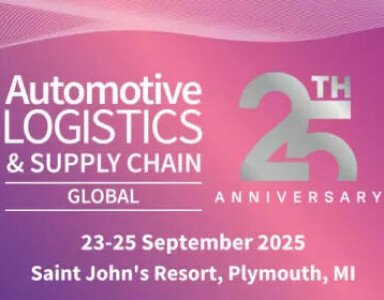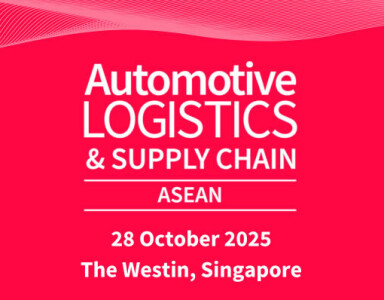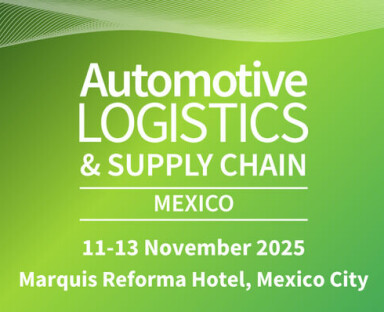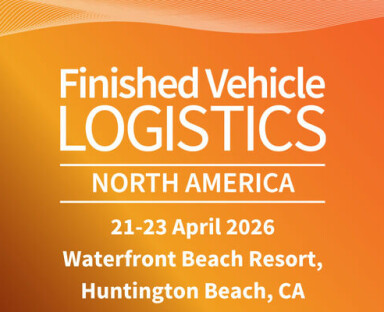Perceptions of protection
While some OEMs have a minimal approach to vehicle protection, there are those who still advocate a complete cover-up.
The protective film now commonly used to protect new cars while they are being transported was first applied in the early 1990s to ward off the effects of acid rain. That was the big environmental worry of the time, and while we don’t hear too much about it these days – government efforts to reduce the amount of corrosive chemicals spewed into the atmosphere have been partially successful, at least in Europe and North America – the film was found to have other benefits.
Notably, it protects paint finishes from small stone chips and dust particles, says David Molina, who is now manager of quality assurance at Glovis America, but in the 1990s worked for Toyota. Over the past 20-plus years, film technology “has evolved and gotten way better,” he says. Today, Glovis, the logistics division for Hyundai and Kia, uses what could be regarded as the three main staples of in-transit protection for vehicles that are imported from Asia into North America: film on vulnerable surfaces like roofs and bonnets (hoods); foam blocks to protect door edges; and plastic wheel covers.
Other carmakers have evolved in completely different directions when it comes to choosing transport protection: some use more elaborate protection such as full body bags, while others have reduced the amount of protection to little or nothing.
 To wrap or not to wrap?
To wrap or not to wrap?
There are limits to what standard forms of protection can achieve, of course. Films and covers are designed to do little more than absorb or deflect small stone chips, dirt or exposure to sunlight. Other than to keep a good eye on the weather forecasts, there is little that can be done if the ship runs into a major storm or a hurricane strikes while the cars are sitting on an exposed dockside – as some US-based carmakers will know from painful and costly recent experience. But preventing small, ‘routine’ damages can, so the argument goes, keep customers happy and reduce the cost of fixing a scratch or dent at a remote location.
The counter-argument is that applying too much protection can make vehicle handlers careless, or complacent, and might also serve to cover up damage, making it difficult to decide which party in the logistics chain was responsible. However, most would agree with Molina that even the best-trained and most careful stevedores and drivers make the occasional mistake and it is impossible to guard against everything that can happen during transport or storage. “Our defect rates are pretty low, but we do try and protect from the top down – if only to avoid anything the birds drop on the cars,” he explains.
Meanwhile, protection technology is evolving all the time. Molina says Glovis is currently evaluating Tyvek, a new film from DuPont, which he says is slightly more expensive but offers potentially greater protection thanks to a better type of adhesive. Another possible change at Glovis is a move from hard plastic wheel covers to film protection, which is much easier to dispose of or recycle than the plastic covers.
Minimal protection at Toyota
Currently, many manufacturers use Wrap-Guard. A modern evolution of the first protective films, Wrap-Guard is the ubiquitous, white peel-off film that adorns the massed ranks of cars on docksides and in rail yards the world over. These include Toyota in the US, according to national manager of supply chain quality at Toyota Logistics Services, Grant McGlynn.
Toyota exemplifies the ‘light touch’ approach to car protection. While all forms of protection have a cost, the question is how much money it is worth spending to prevent perhaps half a dozen damage incidents on any given route in a year? Toyota’s answer is generally ‘not much’, except on specific routes or when using rail transport. The manufacturer applies Wrap-Guard to cars moved by rail in the US, mainly to protect against the fine dust that comes off wagon brakes, known as ‘rail dust’, which, if left, can take the shine off a gleaming new car. However, for purely internal US movements by road, it uses no protection at all.
According to McGlynn, rail tends to have the highest incidence of damage compared to shipping or trucking, although much of it stems from rough shunting of the rail wagons in yards rather than during transport. However, Toyota works continuously with its suppliers to step up performance and McGlynn sees improved handling techniques as the key to cutting damage rather than extra physical protection.
Toyota, he says, continuously scours damage reports to see whether it needs to raise the level of protection it provides. For instance, it has evaluated various types of foam protection, but so far the message is that its current methods are sufficient. “We expect our logistics partners to take care of the cars, to follow standard procedures and for employees to wear appropriate attire – no metal studs or belt buckles – for example,” says McGlynn. “We inspect at each hand-off and, should damage occur, identify where it’s happening.”
For ocean transport, Toyota again uses Wrap-Guard, not so much to protect cars on-board ships but to avoid airborne contamination on the dockside. Although some major car shipping ports have made efforts to rid themselves of dirty cargoes like coal, often at the behest of the carmakers, ports aren’t always the cleanest places. It isn’t always possible to guard against the activities of other waterside industries and if someone is painting a ship or a pontoon upwind, airborne ‘overspr ay’ can mark cars. Then there is acid rain, that old foe of new paintwork, and other natural phenomena that can cause damage, such as hailstorms, although films and wraps are not necessarily effective in these cases.
Protecting costs and the environment
As McGlynn points out, material that is badly secured and flapping around during transport can sometimes cause damage in itself. This sentiment is echoed by Gary Cooper, assistant manager for automobile logistics planning at American Honda, who also sees a trend to reduce coverage on vehicles, partly because of environmental concerns as protective film and wrapping frequently end up in landfills. There is also the cost of the material itself, the labour to fit it and its disposal after use.
Furthermore, improved vehicle handling methods and transport equipment now result in fewer damage claims, says Cooper and “due in part to better paint and clear coats, we rarely see damage from industrial fallout, pollution or the ancient nemesis, rail dust.”
Cooper believes manufacturers are also asking themselves ‘why pay twice for the same service?’ “Protection is costly when it is applied to mitigate damage during handling or transport. But processors and carriers are paid to not damage vehicles to begin with,” he points out, “so why pay to protect a vehicle you are already paying a vendor not to damage? Eliminating external protection would remove the front end cost of this equation and lead to improved handling accountability.”

However, Honda has not entirely eliminated protection. Rather, according to Cooper, it is “trying to target what we use to the areas that are most vulnerable” – horizontal surfaces such as the bonnet, roof, boot (trunk) and also the front and rear bumpers, the driver side door panels and handles.
Bumper pads can protect against contact at low speeds during yard manoeuvres, but there is also a need to protect the interior of vehicles. Honda typically guards the driver’s seat area including seat, floor, door panels, steering wheels, shift knobs and visors, as they are vulnerable to soiling any time the vehicle is moved. Even if mainstream manufacturers do away with all external protection, interiors will probably be one of the last remaining areas of the car that will retain physical protection. “Due to the ever present conditions of dirt and weather, internal protection from soiling will likely never be eliminated completely,” Cooper concludes.
Honda has also been investigating replacing plastic film with a water-soluble, spray-on polymer coating that would be applied robotically. This would be easily removable and biodegradable, although there is no official plan as yet to use it in Honda’s network.
 A cover for all seasons
A cover for all seasons
While Honda and Toyota share a ‘less is more’ approach, a spokesperson for third-party logistics company Vascor, which also specialises in vehicle damage tracking and claims, observes that while some manufacturers have moved away from protection on shipped vehicles to save costs, others are increasing the protection depending on the length of haul.
As in the case of American Honda, Vascor observes that OEMs tend mainly to protect vehicles against environmental contaminants such as rail dust or acid rain, usually choosing to protect the ‘A’ surfaces, which are flat and visible to the customer and where particles are likely to settle or sit, including the roof, bonnet or boot. Vascor applies plastic covering to these customer ‘touch points’, while wheel coverings are also becoming more common to avoid scratches during transport.
Willem de Lange, managing director of Rotterdam-based automotive and claims management services TES, says that there is also some evidence that carmakers also take a seasonable approach to protection, changing their policies according to the weather or time of year. For example, some OEMs use Wrap-Guard in winter but not in summer.
Full coverage
Honda has also been investigating replacing plastic film with a water-soluble, spray-on polymer coating that would be applied robotically. This would be easily removable and biodegradable, although there is no official plan as yet to use it in Honda’s network. A cover for all seasons While Honda and Toyota share a ‘less is more’ approach, a spokesperson for third-party logistics company Va s c o r , which also specialises in vehicle damage tracking and claims, observes that while some manufacturers have moved away from protection on shipped vehicles to save costs, others are increasing the protection depending on the length of haul. As in the case of American Honda, Vascor observes that OEMs tend mainly to protect vehicles against environmental contaminants such as rail dust or acid rain, usually choosing to protect the ‘A’ surfaces, which are flat and visible to the customer and where particles are likely to settle or sit, including the roof, bonnet or boot. Vascor applies plastic covering to these customer ‘touch points’, while wheel coverings are also becoming more common to avoid scratches during transport. Willem de Lange, managing director of Rotterdam-based automotive and claims management services TES, says that there is also some evidence that carmakers also take a seasonable approach to protection, changing their policies according to the weather or time of year. For example, some OEMs use Wrap-Guard in winter but not in summer. Full coverage costs are actually far lower when related to the cost of repairs and delays to a vehicle that has been damaged during delivery. You wouldn’t, argues Covercar’s Alessandro Bolleri, ship a computer or a mobile phone half-way around the world with no protective packaging whatsoever, then spend a small fortune repairing it when it got to the end customer. But that is what routinely happens when cars are moved across continents and oceans – increasingly to new markets where levels of care and protection, not to mention the quality of any remedial work, are typically lower than in western markets.
The cost of decent protection systems is far outweighed by the cost of repairs, argues Bolleri, who feels the message is beginning to get through to mass market manufacturers, as well as the luxury brands. Audi, Volkswagen, BMW and Hyundai are all Covercar customers in various parts of the globe and the firm is also making inroads with General Motors, Chrysler and Ford.
Covercar markets both a full body protection system and a solution that protects just the roof and bonnet. The former is aimed mainly at long-haul markets, while the latter is for shorter hauls, such as between European countries.
The full body cover is designed so that the car can still be driven safely with the windscreen and two windows clear and the door handle easily accessible; at the same time, minimal amounts of adhesive are used so that there is no damage to paintwork. “In general, the longer the distance, the more cost-effective protection is, especially if a car is going to the other side of the globe with a lot of handling,” Bolleri explains.
Not just for luxury brands?
While the luxury makers may have started the trend towards full body protection, the cost of fixing damage is not much less for a cheaper car and can be more expensive relative to its retail value, which Bolleri believes makes the case for using protection all the more compelling.
Bolleri cites a case study of cars shipped from Hungary to Japan that showed full body covers could cut repair costs by 50%, not least because bagged cars do not have to be washed before they are inspected. There is also more to consider in repairing a damaged car than the repair itself, such as temporary storage.
Covercar’s full body covers can be recycled, although Bolleri says some manufacturers prefer to burn them as fuel. Sending them back for reuse is not really practical because of the logistics cost and also because they incorporate small amounts of adhesive – at the windscreen edge, for example – which makes reapplication difficult. They are also bespoke for each car model to improve their effectiveness.
Full covers are also the only effective way of protecting vehicle bumpers, he claims, as adhesive film can’t be used because it damages the paintwork. Also, if a door or panel is dented, for example, the covers at least protect the paintwork, making the repair cheaper and simpler.
Covercar’s partial protection system uses mainly hooks, Velcro and minimal adhesive, Bolleri continues. This means that the protection can be kept in place for 12 months or more; adhesive film would ultimately have to be removed because it would damage the paintwork. Being much thicker than film, it also gives better protection, including against sparks from electrified railway lines.
Currently, Covercar sells around 2m partial protection kits per year and 300,000 full body covers. Needless to say, Bolleri does not support the argument that no protection at all can be more effective than full protection because it makes handlers more careful. While he agrees that training drivers and stevedores is important to minimise damage, he says that while damage rates are reduced immediately after a training course, they inevitably creep up again. Nevertheless, good training and decent physical protection are, in his opinion, a very effective combination.
However, some OEMs will need more convincing of the benefits of the full cover option, particularly, as Honda’s Cooper points out, when full body protection can cover damage up and complicate subsequent claims. “Protection can hide damage as well as prevent it,” Cooper says. “Shipping a vehicle with no external protection ‘cleanses’ any claim submitted since there can be no denial based on the damage being obscured by the protection and not visible when received. Vehicle handling accountability is improved.”
Dealers demand cover  Nevertheless, as Glovis’ Molina attests, many OEM managers are willing to adopt full body covers where cost and customer expectations justify it. For example, Glovis uses mainly adhesive film for most of its imports into the US, but it completely cocoons the high-end Hyundai Equus in a custom body cover. The only way to get inside the Equus while it is in transit is by a zipper on the driver’s side, while the bag is secured with Velcro.
Nevertheless, as Glovis’ Molina attests, many OEM managers are willing to adopt full body covers where cost and customer expectations justify it. For example, Glovis uses mainly adhesive film for most of its imports into the US, but it completely cocoons the high-end Hyundai Equus in a custom body cover. The only way to get inside the Equus while it is in transit is by a zipper on the driver’s side, while the bag is secured with Velcro.
“It is because of the value and because it is a flagship car,” states Molina. Customer expectation for the Equus is so much higher and, with the small volumes being imported, the cost is easier to justify than for a mass-market car. Furthermore, premium marque dealers and customers often don’t want to see these expensive products moved without extra protection, be it in an open car carrier or without protective covers – and their perceptions can override any data about damage occurence.
Indeed, reveals Molina, dealers’ specification of enhanced levels of protection – whether because they believe it is needed or the customer demands it – is one of the drivers behind the increased use of paint protection film on cars in transit. Films are now seen as a permanent accessory to be used in places like door pockets that are especially vulnerable to key damage.
Toyota’s McGlynn says that dealers in places with less developed ports and infrastructure often ask for additional protection on vertical as well as horizontal surfaces, as well as the underside. “Exporters and distributors can be very discerning and they will know what extra protection is needed,” he explains. “Also, customers have high expectations. They will put a car on a lift to check that everything is okay.”
Perhaps the limit is reached with Toyota’s handling of its high-end supercars. Retailing for around $375,000, the cars are lashed down onto pallets which are then loaded by forklift into individual 20ft containers. No other protection is used but Toyota has developed a special transport underside coating, produced by Kats, which is designed to ultimately wear off by itself. “Like any added protection, it is an expense, but it’s a reasonable one,” says McGlynn – proving that measures taken to avoid damage prevention during finished vehicle transport work on a relatively sliding scale.






